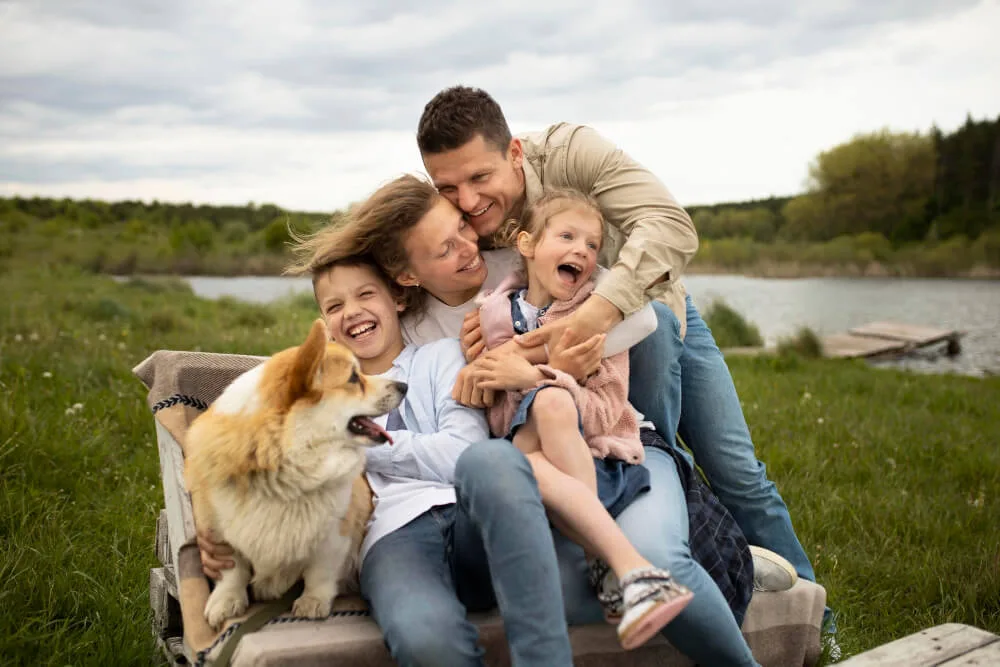Will your family be ready for a tragedy or emergency when it occurs?
Making sure your family has a thorough emergency plan is essential for everyone’s safety, property protection, and community resilience building. This blog will walk you through the process of putting together a successful family emergency plan, with a focus on parenting emergency planning and preparation.
This is Your Family’s Emergency Planning Guide: Plan, Prepare, Protect
Unexpected calamities and emergencies can strike at any time. Making sure your family is safe and healthy can be greatly impacted by being prepared. A well-thought-out family emergency preparation plan may guide you confidently and effectively through these difficult circumstances. To protect your loved ones, here’s how to put together a thorough family emergency preparedness plan in the USA.
Start a Discussion
Talk to your family members about the value of being prepared for emergencies to start. Asking your children to come up with ideas for potential catastrophes and natural disasters in your area will keep them interested. The first step in preparing your family for an emergency is having this conversation.
To make a good family emergency preparedness plan in the USA, follow the below pointers:
- Assess Your Risks: Make a check that which all emergencies like hurricanes, floods, earthquakes, wildfires, or severe storms, are likely to occur in your area. Modify your approach to address these specific risks.
- Establish a Communication Plan: For parenting emergency planning assign a friend or distant cousin who lives out of town to act as your family’s primary point of contact in the event that you and your family become separated during an emergency. Give family members instructions on how to contact and speak with this person in an emergency. As text messages often work when phone calls don’t, be sure that everyone can send and receive them.
- Put Together an Emergency Kit: Assemble the essential goods, such as nonperishable food, water, flashlight, batteries, multitool, first aid kit, important papers, prescription medications, and personal hygiene items. Make sure your kit is tailored to your family’s specific needs, including any dietary or medical limitations.
- Create an Evacuation Plan: Find the best routes out of your home and neighborhood. Conduct evacuation exercises to ensure that everyone in your household is aware of the strategy. Make sure you have a reliable vehicle or other evacuation transportation. Make arrangements for a safe meeting place so that your family may reunite in an emergency.
- Define Roles and Responsibilities: Assign each family member specific responsibilities based on their age and skill level. Assign someone to assist little children or take care of pets, for example. Teach family members how to turn off the electricity, gas, and water as needed.
- Teach and Practice: Explain to your family the different types of emergencies that could occur and what to do in each situation. Practice your evacuation and communication plans, and hold regular emergency drills to ensure that everyone knows what to do in an emergency.
- Update Contact Information: Keep a contact list in your emergency pack with the phone numbers of your relatives, neighbors, physicians, schools, and emergency agencies.
- Consider Special Needs: Consider the unique requirements of family members who are ill, disabled, or have special needs. Ensure you have everything they will require, including a place to stay.
- Stay Current: Pay attention to local news, weather, and emergency warnings. Sign up to receive alerts and warnings from local law enforcement or emergency management groups.
- Safely Store vital Documents: Copies of birth certificates, passports, insurance policies, wills, and other vital documents should be kept in a waterproof and fireproof container.
- Review and Update Your Plan: Whenever your contact information, family dynamics, or the kinds of conditions that are unique to your area change, make sure to update your family’s emergency preparedness plan.
Implement Your Strategy
To keep a check on family emergency preparation, do the following.
Regularly go over your family’s safety protocols and emergency preparedness plan. Try carrying out your plan twice a year at the very least. Consider fictitious scenarios that will assist you in handling particular circumstances. Try crawling on the ground to avoid smoke during in-home fire exercises, or block off specific sections to concentrate on other escape routes. The more scenarios you run through, the more prepared you will be.
Wrapping Up
In an emergency, family preparedness is crucial to the safety of you and your loved ones. Create a family emergency preparedness plan in USA now and start practicing so that you can act effectively in the event of a disaster.
Recall that preparing for emergencies as a family is an ongoing activity. You can guarantee everyone in your family’s safety and well-being during emergencies by organizing, preparing, and safeguarding them.
Happy Reading!!
